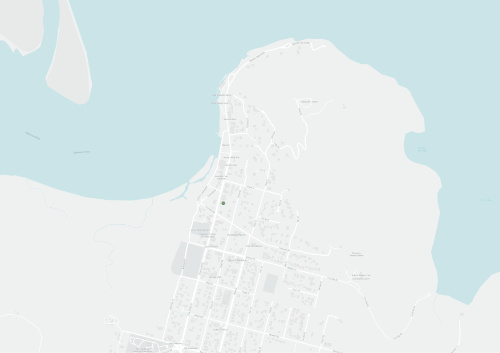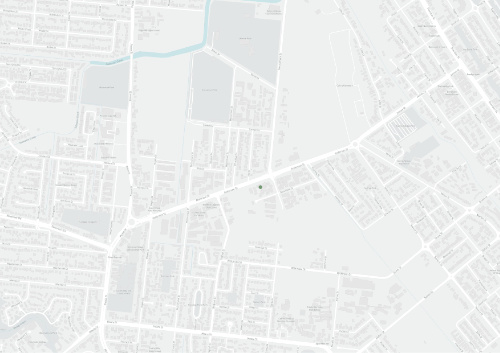Plan Explorer
Filter by:
Region
Topic
Sector
Other
Results
Aurukun waterways wetland and coastal draft management plan 2009 (draft)
StrategicThis draft plan was the product of a contract between Wik Projects and the Department of Natural Resources and Water, created on behalf of the Natural Heritage Trust. This report focuses predominately on the experiences and aspirations of Wik, Wik Way, and Kuugu people.
Western Cape Communities Trust investment strategy 2011-2022
This investment strategy released in 2011 presents an in-depth explanation of the funding allocation for the Western Cape Communities Trust, established by the Western Cape Communities Co-existence Agreement for a number of purposes such as natural resource management and funding allocation.
Western Cape Chamber of Commerce strategic plan 2010-2012
Obsolete CommunityThis strategic plan was developed following a review of the 2007 Western Chamber of Commerce Strategic Plan during a workshop in Weipa on the 20th of November 2009.
Western Cape Communities Trust & Western Cape Communities Coordinating Committee strategic plan 2009-2012
Obsolete StrategicThis document was released by the Western Cape Communities Trust (WCCT) and Western Cape Communities Coordinating Committee (WCCCC) as a plan to deliver on 4 key objectives within the mining lease area surrounding Weipa.
Port of Weipa environmental management plan
Current StrategicThis environmental management plan was released by the North Queensland Bulk Ports Corporation as part of their environmental program with the objective of acting as a reference document for all then-current and potential users of the Weipa port.
Cape York Peninsula Land Use Strategy: Land Use Program: Aspects of Commercial and Non-Commercial Fisheries of Cape York Peninsula
CYPLUSCYPLUS commissioned WBM Oceanics Australia to prepare this report which describes the level of use of commerical and non-commerical fisheries, factors affecing the environmental condition of said fisheries and habitats, and management issues relating to each of the fisheries and habitats in 1994.
Draft Cape York Peninsula Natural Resource Management Plan (2005)
Obsolete Government PolicyThe aim of the Plan is to ensure that natural resources are well managed, and protected where required, for the benefit of us all and future generations. The Plan aims as far as possible to be consistent with other regional strategies.
Cape York Peninsula Regional Biosecurity Strategy
Current StrategicCape York Natural Resource Management (Cape York NRM), Cook Shire Council (CSC), Weipa Town Authority, Wujal Wujal, Hopevale, Lockhart, Mapoon, Napranum, Aurukun, Pormpuraaw and Kowanyama Aboriginal Shire Councils and the Northern Peninsula Area Regional Council (NPARC) have collaboratively devel
Great Barrier Reef report card 2012 and 2013
Current InformationalThe Great Barrier Reef report card is part of the Reef Quality Water Protection Plan and measures the progress from 2009 to 2013 regarding the Reef Water Quality Protection plan 2009 targets.
Reef Water Quality Protection Plan 2009
Superceded StrategicThe intention of the Reef Water Quality Protection Plan 2009 was to ensure that the water quality of the Great Barrier Reef Lagoon was improved by addressing non-point source pollution caused by large-scale land use along the eastern coastline.
Laura Rangers weed and fire plan
Current CommunityThis poster outlines the objectives, location, strategy, planned outcomes, and implementation of the Laura Ranger's Weed Management Strategy.
Recently added
Recovery plan for the Northern Quoll Dasyurus hallucatus
Threatened speciesThis recovery plan was released in 2010 with the ultimate goal of haulting the decline of the Northern Quoll, which are threatened with extinction by cane toads as they have a susceptibility to the toxin.
National recovery plan for the Specatacled Flying Fox Pteropus conspicillatus
Threatened speciesThe Spectacled Flying Fox is consdiered a vulnerable species under the Commonwealth Environment Protection and Biodiversity Conservation Act 1999 and so this plan was developed by the Queensland and Australian Government's in order to secure long term protection of the flying fox populations by r
Recovery plan for the stream-dwelling rainforest frogs of the wet tropics biogeographic region of north-east Queensland 2000–2004
Threatened speciesThis plan was released in 2001 by the Natural Heritage Trust and Queensland Parks and Wildlife Service with the ultimate goal of improving the conservation status of particular species of stream dwelling rainforest frogs within the Wet Tropics.
Whale Shark recovery plan 2005-2010
Threatened speciesThe whale shark is the world's largest fish and one of only three filter feeding shark species, it was listed as vulnerable in 2001 under the Environment Protection and Biodiversity Conservation Act 1999 (EPBC).
National recovery plan for the bare-rumped sheethtail bat Saccolaimus saccolaimus nudicluniatus
Threatened speciesThis plan was released in 2007 with the goal of improving the conservation status of the then critically endangered bare-rumped sheethtail bat.
Recovery plan for threatened seabirds
Threatened speciesThis plan attempted to improve the conservation status of ten species of Sea Birds by protecting and effectively managing breeding and foraging habitats and ensuring that threats such as pest flora and fauna dont prevent population growth.
Plan for the recovery of the southern cassowary
Current Threatened speciesThe southern cassowary (Casuarius casuarius johnsonii) occurs primarily in rainforest habitats but can also be found in woodlands, swamps, and disturbed vegetation forraging for fruits throughout the Wet Tropics.
National recovery plan for the buff-breasted button-quail Turnix olivii
Threatened speciesThe buff-breasted button quail was listed as endangered under the Commonwealth Environment Protection and Biodiversity Conservation Act 1999 and vulnerable and Queensland Nature Conservation Act 1992 prompting the development of this national recovery plan.
National recovery plan for the water mouse (false water rat) Xeromys myoides
Threatened speciesThe water mouse is listed as vulnerable under the Commonwealth Environmental Protection and Biodiversity and Conservation Act 1999 prompting the development of this plan in 2010 in order to improve the conservation status of the species by habitat conservation, threat reduction, research and publ
National recovery plan for the wet tropics yellow-bellied glider Petaurus australis unnamed subspecies
Threatened speciesThe Wet Tropics yellow bellied glider is a small marsupial classified as vulnerable under the Commonwealth Environment Protection and Biodiversity Conservation Act 1999 and Queensland Nature Conservation Act 1992.

